The time has come to talk about not just where we've been and where we are, but where we're going and how to get there.
Editor's Note: The following article is the first in a series.
The time has come to talk about not just where we've been and where we are with tactics and training, but where we're going and how to get there.
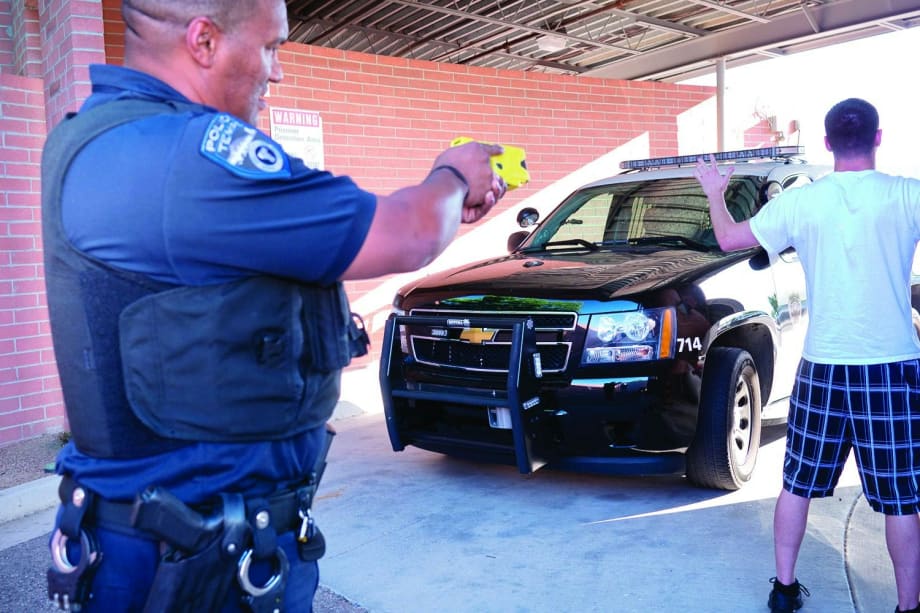
Few tools have changed modern law enforcement practices, policies, and tactics more than the TASER. While TASERs were available 30 years ago, they were not very effective.
Photo: POLICE File
The time has come to talk about not just where we've been and where we are, but where we're going and how to get there.
Editor's Note: The following article is the first in a series.
Forty years ago, in 1979, Chief Daryl F. Gates of the Los Angeles Police Department sent a letter to the heads of the 50 largest police departments in America. It asked simply, "What suspect control devices do you use other than firearms, batons, saps, and handcuffs?" The commissioner of a certain large agency in New England (it starts with a "B") wrote back simply, "Be advised, there are none." It was amusing to read at first, but for many agencies at the time, it was true.
Seven years before that, in 1972, as they sat in their car New York City Police Officers Gregory Foster and Rocco Laurie were ambushed and murdered in a single incident by members of a militant group.
Two years before that, in 1970, four California Highway Patrol officers engaged two men and were killed in "The Newhall Incident" that many of you may have heard about in training.
Seven years before that, in 1963, LAPD Officer Ian Campbell and his partner Officer Karl Hettinger made an investigative stop and were disarmed, kidnapped, and driven to "The Onion Field," the title of former LAPD Detective Joseph Wambaugh's book and a movie that is still painful to watch. Campbell was gunned down in cold blood. Hettinger was fortunate enough to escape physically, but he never escaped mentally.
Less than three years ago, in 2016, five Dallas Police Officers were murdered by a single killer in a running gun battle on the city streets while they were detailed to protect an anti-police demonstration.
Each of these tragedies has presented lessons to be learned in terms of policy, training, equipment, and tactics. Those four words: policy, training, equipment, and tactics are the recurring themes of this series of articles.
We know it's a dangerous profession. We know that public support for what we do changes over time, and that it's at a low point in the past few years.
We sometimes hear members of the public say that police work isn't so dangerous compared to the number of deaths experienced by construction workers, for one example. We have our accidental deaths too, but it doesn't seem to occur to our critics that policing is the only civilian profession whose members occasionally get murdered for just wearing their uniform and doing their job.
These articles are meant to explore a half-century of police policy, training, equipment, and tactics. How have we changed? And what does the future look like as we seek to continuously improve?
It's been 43 years since I first put on a badge at age 27. Do the math. As I get older, I've stayed in the game as a consultant and expert witness…shootings, TASERs, arrest-related deaths are most of the work. I meet officers from a lot of agencies who are being sued (sometimes prosecuted), and I continue to be amazed at the professionalism, the resourcefulness, and the heroism of the men and women of our profession who do the right thing when they put their lives on the line to protect and to serve. (And I'm occasionally disappointed, as I'm sure you are, when someone falls off the wagon and embarrasses the profession.)

In 1997 LAPD officers shot it out with bank robbers in armor and carrying automatic rifles. The officers' handguns and shotguns were not up to the task. Now agencies issue rifles.
Photo: POLICE File
Sometimes our policies, training, equipment, and tactics do not help us solve the problem we face on this call or that. We need to keep finding better ways and better stuff.
Policy? Policy is a statement of what our organizations normally expect in a given situation. Policy is driven by management discretion (sometimes with union input) and the law. You usually should follow it. But when should you break it?
Training? It is the key to implementing policy, properly using equipment, and engaging in effective tactics. From basic training to FTO to in-service training, we'll take a look.
Equipment? Firearms, batons, saps, handcuffs. That's where we were. TASERs, OC and other chemical sprays, backup weapons, patrol rifles, trauma kits, extended-range impact projectiles, and ballistic vests and car doors. That's where we're at. But what else is needed?
Tactics? We will get into better vehicle stops, safer pursuits, carotids and LVNR, the evolving responses to active shooters, de-escalation, and more.
If you drive Interstate 5 a few miles north of Los Angeles, in Newhall you can see the memorial signs with the names of the four murdered CHP officers: James Pence, Walter Frago, Roger Gore, George Alleyn. If you visit the Los Angeles Police Museum (www.laphs.com), you can view an entire room filled with evidence and artifacts from "The Onion Field." And if you visit the National Law Enforcement Officers Memorial in Washington, D.C., you can read the names and reflect on the lives of the thousands of law enforcement officers who have died in the line of duty over the years in this country.
"We dishonor the fallen if we ignore the lessons that would have saved them," says retired Commander Sid Heal of the Los Angeles County Sheriff's Department. The best way to honor the memories of our fallen brothers and sisters is to learn the lessons, then train and equip ourselves to do our jobs better and safer for all concerned, while following policies that provide appropriate guidance but also have our backs when we do it right.
We honor the past, we want to be as good as we can be in the present, and we want to do whatever we can to innovate and improve our policy, training, equipment, and tactics.
Let's begin! This series won't just be my own ideas. You will hear from other recognized experts from across the country on a variety of subjects throughout.
Policy Overview
Every organization expects its employees to be familiar with and to follow policy. A simple definition of policy is "a course or principle of action." It's what we want you to do or not to do. Why do we need policies? "Policies and procedures are designed to influence and determine all major decisions and actions," according to one popular answer.
Policy is more than what comes out of some thick book. It's what you train. It's what you condone. It's what you support on a day-to-day basis in your department. Ultimately if your agency's actual practice does not match your written policy, liability may attach.
Is policy fixed and rigid, not allowing deviation? Some people think so. But real-world decisions must sometimes be made that may not strictly conform to written policy. Sometimes you just have to do the right thing, then explain your decision.
For example, if someone is seriously hurt, your policy might dictate that you call for paramedics to respond to the scene. But you've probably heard of situations where a seriously wounded officer or civilian immediately gets transported in a police car to a fire station or emergency room, rather than wait for the ambulance because violating the policy might be the best way to save the life.

More and more agencies are acquiring ranged less-lethal weapons like this 40mm launcher from DefTech.
Photo: POLICE File
Some agencies have a policy that prohibits cocking the hammer on a semi-automatic handgun before firing the first shot because the agency believes it will reduce accidental discharges by requiring the shooter to fire double-action. Arguably true. Follow the policy. But what if you confront the bad guy holding the knife to the woman's neck while holding her in the classic hostage position? Cock the damn hammer! And greatly reduce the chance that you'll hit the victim instead of the suspect when you take the head shot. This has happened. The suspect went down, the hostage was saved, but high-ranking officers objected. Fortunately, the chief of police supported the officer. A policy violation rooted in common sense.
I note that many use-of-force policies I see around the country have a disclaimer like, "It is recognized that this policy may not cover every conceivable tactical situation an officer might encounter. Therefore, officers are required to use their best tactical judgment and apply the spirit of this policy in their decision-making." Such an exception to policy recognizes reality.
Equipment Overview
We are lucky to have more and better equipment options than officers a generation or two ago. Six-shooters were the norm, now semi-autos rule. TASERs and sprays and beanbags and 40mm have revolutionized how we deal with resistance. Patrol rifles give us the edge. Computers in our cars have changed the game.
It wasn't that long ago that we didn't have radios on our belts and cellphones in our pockets.
Picture this: You and your patrol partner get a call for a domestic violence incident in the mid-1970s. You pick up the car-radio microphone, you roger the call. You get to the 80-year-old building with the rickety elevator that you don't use as you hike to the fifth floor. You hear the yelling and screaming, you knock on the door. The yelling stops, the screaming continues, the door opens. Your partner calms down the woman, you've got the man. He's 30 years older than you, a few inches shorter, and about the same weight. As you attempt to escort him to the other side of the room for a chat, he stands still and casually grabs your bicep and squeezes it like a vise as he let's you know he was a boxer back in the day. No doubt he was. He's solid as a rock, and he has experience at taking a beating and winning. No spray, no TASER, and—worst of all—no way to call for backup. The guy could probably clean both you and your partner's clocks, regardless of your DT prowess and your stick. Verbalization becomes very important in such a situation. And you have to resolve it here and now. So, belt radios really changed things. It's hard to imagine working without one, but that's the way it was.
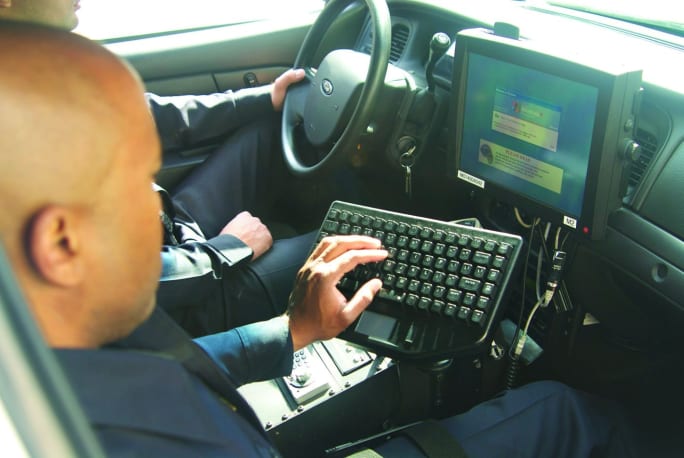
Computers in patrol vehicles have given officers a wealth of information that they cannot gain from their radio communications.
Photo: Vince Taroc
How about the whacked-out guy on PCP on Christmas Eve 1977? After he's crashed his car into about 20 parked cars, and you and your partner have run him off the road figuring it would end things, now the guy needs handcuffs. But he knocks six of you around like you're a bunch of first graders. You finally get him down under the polyester pile. But his arms are rigid. He has endurance beyond description, super-human strength. You're assigned the outstretched right arm, and you use all your strength and leverage, but the arm won't come off the pavement for handcuffing. Repeated five-cell metal flashlight strikes to the shoulder area finally help the effort. TASERs have really changed things. Fewer and less severe injuries for officers and suspects alike.
Then there was the North Hollywood Bank Robbery Shootout in February 1997. LAPD officers armed with six-shooters, 9mm semi-autos, and 12-gauge shotguns vs. two armed robbers in full-body Kevlar suits armed with fully automatic rifles with drum magazines. No patrol rifles. Not pretty. Now there are patrol rifles with trained officers in lots of black-and-white cars on every shift. Those rifles are rarely used, but they are there when you need them.
Where do we need to go with equipment?
Here's an idea that's long been dreamed about, but we don't have it yet! The "Star Trek" Phaser or something similar. Hand held, highly directed wireless energy, instant incapacitation at a distance, nonlethal. It will take a major political push by police management and police unions to inspire funding for the appropriate research and innovation. Some forceful, dynamic leadership, not the usual incremental stuff. Frame police shootings as a national emergency (only because it is…the next series of riots is just around the corner). A united law enforcement message to Congress and the media, "Yeah, we're tired of all these shootings, too, and we're tired of being blamed…Help us do something about it." One man's opinion.
To make this article series as meaningful as it can be, I want to ask for your help. Email me at gregmeyer@earthlink.net with your thoughts about better policy, training, equipment, and tactics. Let's team up and share some ideas to benefit all of us in the profession.
Greg Meyer is a retired Los Angeles Police Department captain, a nationally recognized use-of-force expert, and a member of the POLICE Advisory Board since 1997.

Discover how one police department cut crime nearly in half using smarter patrol data. This whitepaper breaks down the real-world strategy behind a 46% drop in vehicle thefts, improved officer safety, and stronger community visibility.
Read More →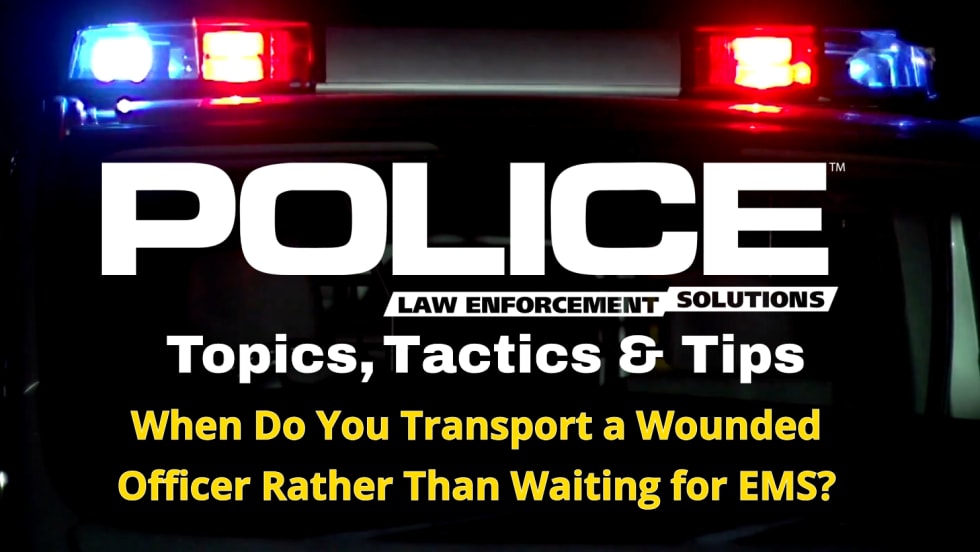
Thumbnail for video series POLICE Topics, Tactics & Tips with a yellow headline that reads When Do You Transport a Wounded Officer Instead of Waiting for EMS?
Read More →
In this video, hear from Dustin Mowery, a product specialist at Team Wendy, as he discusses how to best use a patrol vehicle for cover.
Read More →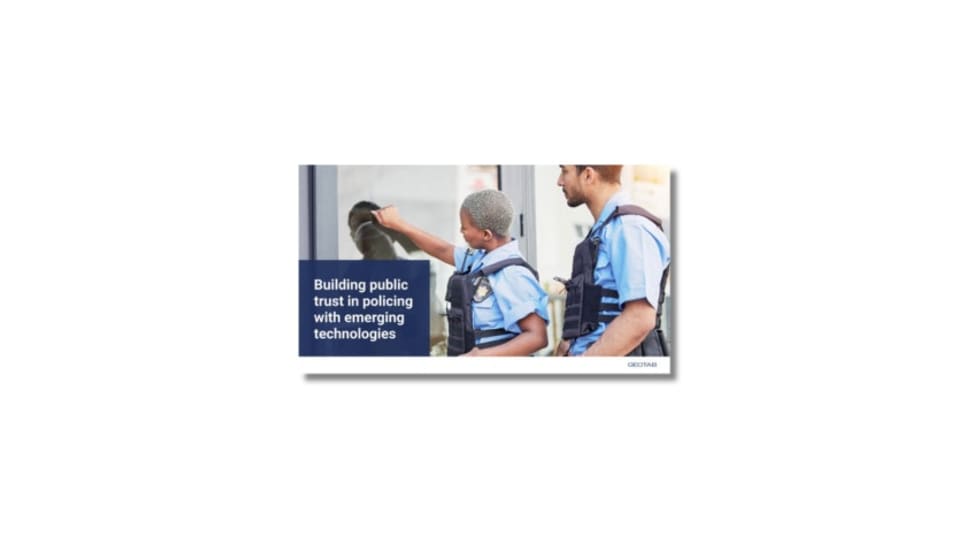
Whether your department is focused on improving transparency or rebuilding community confidence, this ebook offers real examples and practical strategies to help. Learn how data-driven insights and modern fleet technologies can strengthen accountability, support officer safety, and enhance public trust.
Read More →
While a patrol vehicle offers some cover protection when taking fire, remain mobile and don’t stick to one piece of cover indefinitely. Dustin Mowery, of Team Wendy, shares what he teaches about using vehicles as cover.
Read More →
Recruit Officer Jon-Marques Psalms, 30, reportedly suffered a medical emergency after completing a training exercise on Wednesday August 20, 2025, at the Academy.
Read More →
The webinar titled “Beyond the Plate: Real-Time Video Intelligence for Police Operations” will show how pairing LPR data with live camera feeds delivers faster, safer, and more coordinated responses on everything from stolen vehicles to active BOLOs.
Read More →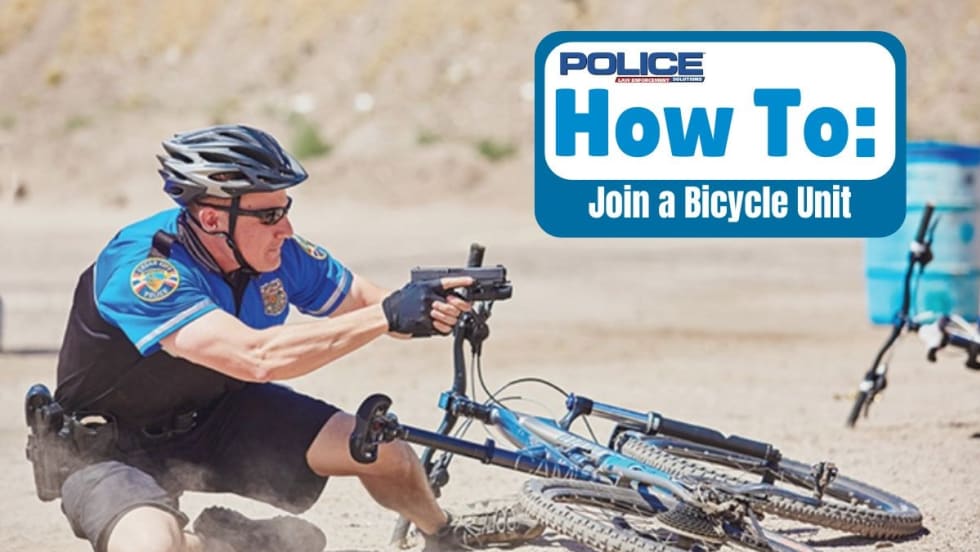
A great bicycle officer has a strong service mentality, paramount knowledge of laws, a thirst for new knowledge, and someone who can adapt to change easily. If this describes you, your agency's bicycle unit might be a good fit.
Read More →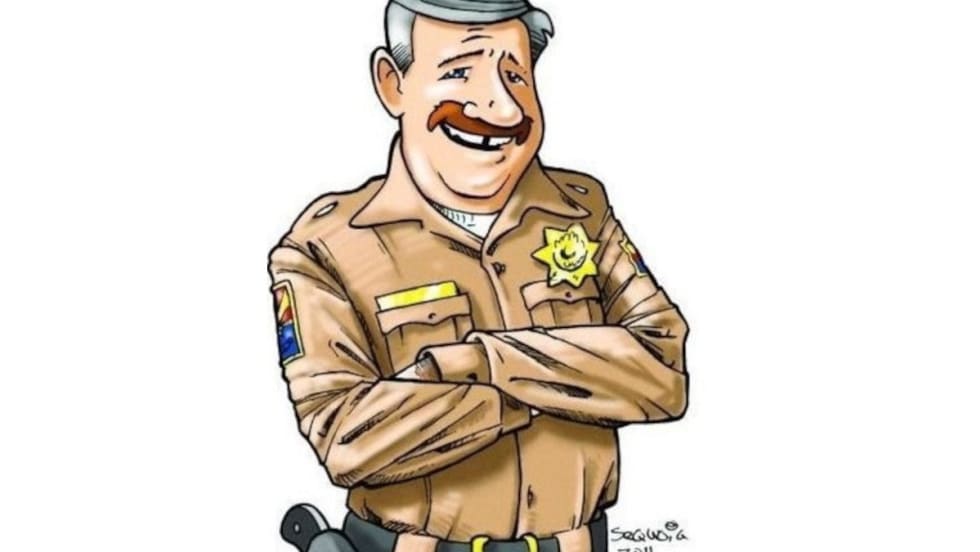
You need to train like an elite athlete for the life-and-death challenge you may some day face on the job.
Read More →